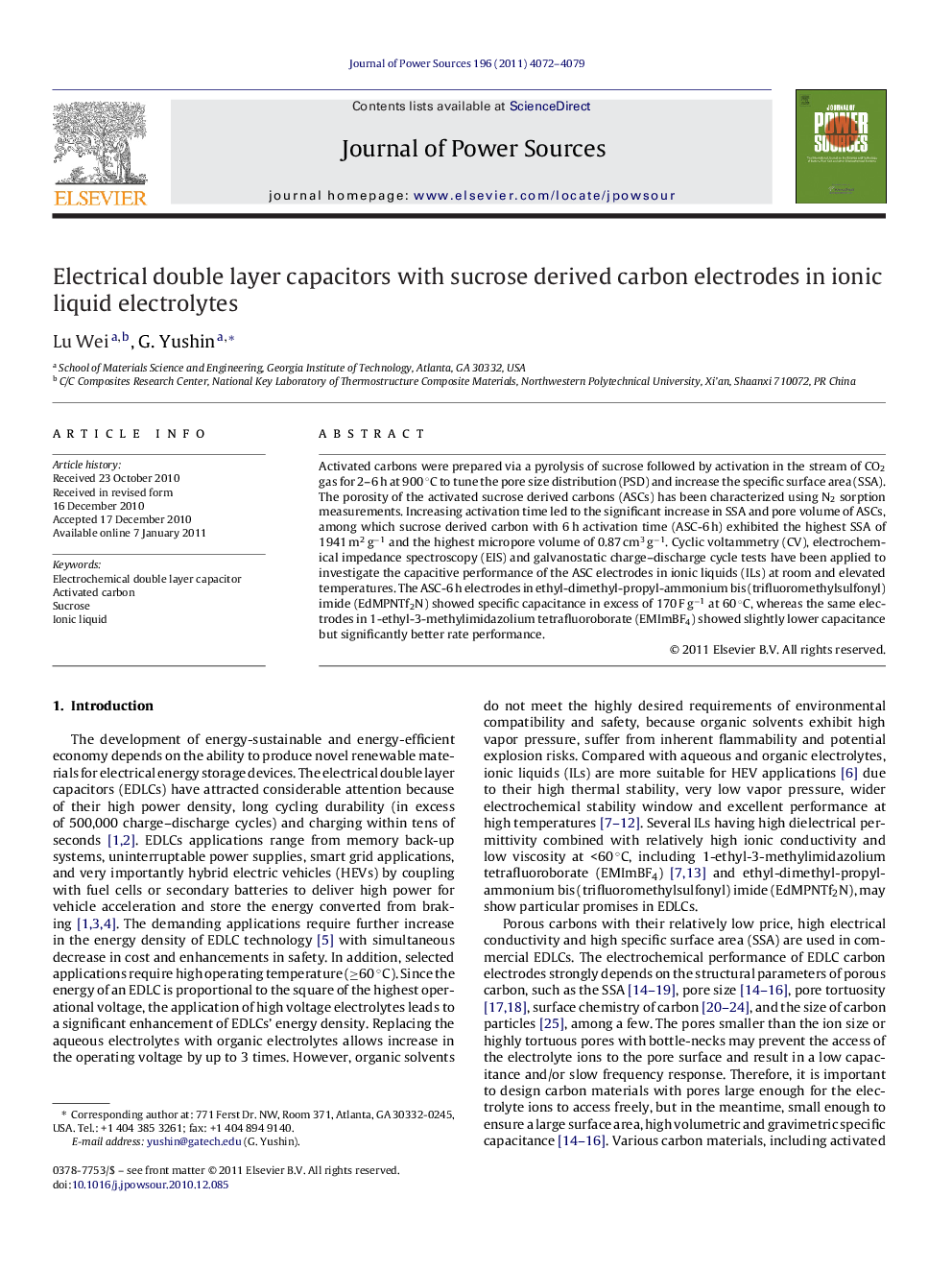| Article ID | Journal | Published Year | Pages | File Type |
|---|---|---|---|---|
| 1289283 | Journal of Power Sources | 2011 | 8 Pages |
Activated carbons were prepared via a pyrolysis of sucrose followed by activation in the stream of CO2 gas for 2–6 h at 900 °C to tune the pore size distribution (PSD) and increase the specific surface area (SSA). The porosity of the activated sucrose derived carbons (ASCs) has been characterized using N2 sorption measurements. Increasing activation time led to the significant increase in SSA and pore volume of ASCs, among which sucrose derived carbon with 6 h activation time (ASC-6 h) exhibited the highest SSA of 1941 m2 g−1 and the highest micropore volume of 0.87 cm3 g−1. Cyclic voltammetry (CV), electrochemical impedance spectroscopy (EIS) and galvanostatic charge–discharge cycle tests have been applied to investigate the capacitive performance of the ASC electrodes in ionic liquids (ILs) at room and elevated temperatures. The ASC-6 h electrodes in ethyl-dimethyl-propyl-ammonium bis (trifluoromethylsulfonyl) imide (EdMPNTf2N) showed specific capacitance in excess of 170 F g−1 at 60 °C, whereas the same electrodes in 1-ethyl-3-methylimidazolium tetrafluoroborate (EMImBF4) showed slightly lower capacitance but significantly better rate performance.
Research highlights▶ A low-cost renewable carbon material with uniform pore size and high surface area was prepared using sucrose as precursor. ▶ A systematic study on processing-structure–property relationships has been performed. ▶ Sucrose-derived carbon demonstrated excellent electrochemical performance in supercapacitors based on ionic liquids. ▶ The proposed technology suggests a great promise for the new generation of high-energy non-flammable supercapacitors.
